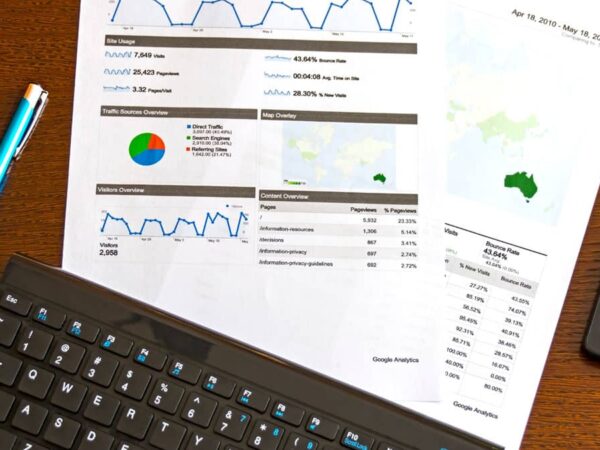5 Things to Do With Your Small Business Profits
Your business is doing well and you’re turning a profit – that’s awesome! Now the question is what to do with your small business profits.

Many small business owners go through difficult times in the early stages when they wonder if their small business will ever see profits. The ultimate goal of any small business owner when you start up your business is for that business to take off and become profitable to the point you know your business will be sustainable for the long term. If your small business is now turning a profit—congratulations. That’s a terrific milestone for your company and your hard work is finally paying off!
Of course, the nature of business means it’s never time to rest on your laurels. Once your business is making money, the next business decision to make is to how to use those profits. If you’re in those early stages, it’s not just about paying yourself more to buy something fun; it’s about setting your company up for future growth and long-term success.
Here are 5 savvy options small business owners should consider when deciding how to use their profits.
What You Need to Know About Small Business Profits
Before we jump into how to use profits, we should take a minute to clarify what profits are and how to measure them. Experts recommend all small business owners learn to compile and use a profit and loss statement (P&L). When in doubt on any of your P&L figures, it’s best to err on the conservative side so you don’t overcommit yourself to plans or projects that your company cannot afford.
P&L statements serve multiple purposes. First, they provide you with a clear snapshot of the current financial viability of your business. Second, they allow you to set budgets and project your future business earnings. Finally, your P&L can help you determine your gross profit margin. In basic terms, your gross profit margin is how profitable your company is. It’s the amount of money you have leftover after you’ve paid all your bills and taxes.
Starting to turn a profit doesn’t mean you can take your hands off the wheel. You’ll need to closely track your profitability to make sure things aren’t slipping. You may also be able to spot ways to cut costs or increase revenues and boost that profit margin.
Note that average profit profits vary by industry. Talk to your financial advisor about what sort of profits a healthy business in your industry can expect. Once you’re turning a comfortable profit, your options for using it are pretty simple.
1. Save for a Rainy Day
One of the first things you should consider when you start to see a profit is your savings. Do you have an adequate rainy-day fund to cover your working capital needs in case of an emergency expense or an unexpected revenue slowdown?
Take a look at what it costs to run your business over the course of a month. Then take a look at your bank account. If you started to see a serious slowdown in revenues or a large expense, how long could you keep the lights on? How long could you keep paying your employees and vendors?
Consider socking away enough money to make sure you can cover your working capital for several months in case you hit a rough patch. That’s a great way to help ensure your business’s longevity even in the face of a downturn. It also increases the value of the company, which can be useful if you’re trying to attract investors or if you want to borrow against your ownership interest for your personal financial needs.
Related: Pay Off Debt or Invest?
2. Use Business Profits to Grow Your Business
Before using profits to undertake business growth or expansion, it’s important to run all the numbers and check with your advisors. At this point, it would be useful to revisit your business plan. You want to project whether or not reinvesting your current profits and undertaking more costs will pay off in the long run. Expansion plans should only begin once you’ve determined that your company could handle the extra operating costs.
If you decide to go ahead with reinvesting your small business profits to grow your business, you have many options:
- Perhaps you want to spend more marketing dollars to grow your customer base.
- Or if you already have a thriving, growing customer base, perhaps it’s time to start new lines of businesses so you can upsell to existing customers or appeal to new ones.
- There’s also the option of hiring more help so you can serve more customers.
- If you have a brick-and-mortar business that would benefit from an expanded footprint, perhaps you can expand your space or move to a bigger location.
Consider also that you don’t necessarily need to have enough cash saved up to pay for a new location, equipment, or personnel. You might decide you’d prefer to use the financing to help you pay for those needs.
Related: Extra Cash: Choosing Between Investing And Paying Down Debt
3. Pay Down or Refinance Debt
It’s possible you’ve incurred some debt in order to start up your business. If this was your first venture, you may have had to borrow at a relatively high-interest rate, so you may want to consider refinancing and/or using some of your profits toward paying down debt.
You have two main options here: you can make large payments toward the principal balance of your debt, or you can look for refinancing. If your loan has a high-interest rate, you may want to take your updated financials to lenders to talk about refinancing. Once you can show that your business is profitable, you may be able to refinance at lower rates because you’re at a lower risk of default.
If you pay down the principal, you’ll pay less interest over the lifetime of the loan, which will save you money. You’ll also have a lower total debt load, which increases your creditworthiness.
Related: Refinancing Your Business Loan
4. Use Business Profits to Pay Yourself
Finally, another way to use your business profits is to pay yourself, the business owner. The use of business profits for owner salaries can be a little bit complicated, depending on the legal structure of your operation. Here a few basics to consider.
If your company is a sole proprietorship or another pass-through entity, all of your profit flows straight to you as income anyway. If you’re running a C Corp, you can pay yourself a salary. If you start to see profits, you always have the option to pay yourself and/or your employees more. Remember that you don’t want to compromise your future growth opportunities, so raises should be reasonable. And if you’re involved in a partnership or a business with multiple owners, you’ll all need to agree (or get a majority vote, typically) as to what to do about profits and pay.
Before you decide to pull the profits out as a salary, make sure to talk to your tax advisor. If your personal income would be taxed at a higher rate than your business’s income, you may want to stick with your salary and let the value of your company increase. On the other hand, paying you a large salary could also decrease the company’s tax liability. That all depends on the specific numbers involved, so you’ll need to see a professional.
In addition to paying yourself a salary or bonus, you may want to consider paying yourself a dividend. A “dividend” is a payment made to shareholders in a C Corp. There are many different possible share structures, but in the simplest one (where there’s only one kind of share), everyone gets a dividend proportional to their ownership. You don’t have to pay all your profits out this way; you can choose any amount per share. The company can’t expense dividends, meaning it pays tax on that amount, but your personal tax rate on dividends is just 15%. Again, whether this is a good idea or not depends on the effective tax rates for your business and yourself, so you’ll need to talk to a tax advisor.
Related: Sole Proprietorship vs. Limited Liability Company (LLC): Advantages of Each
5. All of the Above
Of course, you don’t have to make all-or-nothing decisions about what to do with your cash once your company reaches the black. You may choose to leave some cash in the company to increase its value, pay a dividend, and also give your employees raises. You could buy a new piece of equipment and increase your own salary. It’s up to you and your goals for running your business. Being in the black just means you have a lot more choices and opportunities!
No matter what you think might make sense when it comes to using your profits, you should always consult a tax professional. Remember that if you’re running a pass-through entity, you’ll have to pay tax on your profits at your personal rate. And if you’re running a C Corp, your business will have to pay tax on those profits. Talk to your tax advisor about your business goals and financial situation; they’ll be able to help you calculate your net effective tax rate (after applying all the possible deductions, deferments, workarounds, and brackets) and work out a plan that maximizes both your tax efficiency and your objectives.
Learn More
When it comes to your finances, you want clear guidance and easy to implement tools based on your unique needs. Visit Learn with AOF to get started strengthening your financial management and meeting your goals.
Experience a different kind of financial education. Learn with AOF has flexible, on-demand courses developed by small business owners, for small business owners. Learn on your schedule, with no time commitment or limit. Save your progress any time to fit courses into your busy schedule.








